Did you know, more likely than not, you were born a creative genius?
Creativity is abundant in children, with 98% percent (yes, 98%!) of the 1,600 children aged 4-5 years who took part in the Land and Jarman study considered a creative genius. Sir Ken Robinson debates the effect of the school system in his TED Talk because by the age of 9-10 years, the same group of children was tested again, and the percentage of creative geniuses amongst the group declined significantly to only 30%, by 14-15 years it fell further to 12%. By 25 years, it had deteriorated to a measly 2%.
The Land and Jarman study shows that early years education is on the right track by creating environments brimming with opportunities for expressive arts. If we can make the time and set the scene for creativity with open-ended materials, resources, and encouragement, we can help sustain young people's creativity.
This article looks at ways to effectively support and maintain children's creativity, the immediate benefits of engaging in creative opportunities, and ideas for your expressive arts area.
What does creativity look like in early years education?
If every child is born a creative genius, our role as educators is not to make or develop their creativity; it is to support children in maintaining their creativity, facilitating experiences that will help them flourish.
Expressive arts is all about giving children a visual and creative outlet to communicate. There are endless possibilities for creativity and imagination to develop through the visual arts (painting, drawing, etc.) and performing arts (dance, movement, music, etc.). Children can be creative in so many different ways; all that is needed is a selection of open-ended materials and resources and some encouragement. We need to understand that the child is the creator, and there is a pattern for unfolding this.
How do we support our children's creativity?
"Creativity is one of the highest areas of human possibility. Education greats like Jean Piaget, Loris Malaguzzi, Rudolf Steiner and Sir Ken Robinson exhort us to make sure there is creativity in every child's life, and it starts with us." Pennie Brownlee, 2016
Protect their independence and self-determination
Creativity requires freedom. When educators and parents provide open-ended experiences in our early years' environments, the opportunities are authentic and rich.
It is critical to offer time to create and make freely, starting whenever the inspiration hits. Children need the ability to pause and resume their ideas and to have the resources and supplies at their fingertips.
Mess is a necessary part of the process, and having a dedicated expressive arts area can help to facilitate this. When educators teach children to care for their environment, allowing them to help restore it back to its original state when they're ready can empower the child.

Even when providing the tools, in this case, beautiful nature brushes, there is an urge to explore directly through touch. Images via @navybabynz and @come_rie_with_me.
Suitable materials and resources
Allowing freedom to explore a prepared variety of quality materials without restraint makes all the difference. Recycled and found materials can be inspirational in this process too. Collecting and recycling meaningfully and sorting and displaying these materials in an orderly way will help children assess what they require.
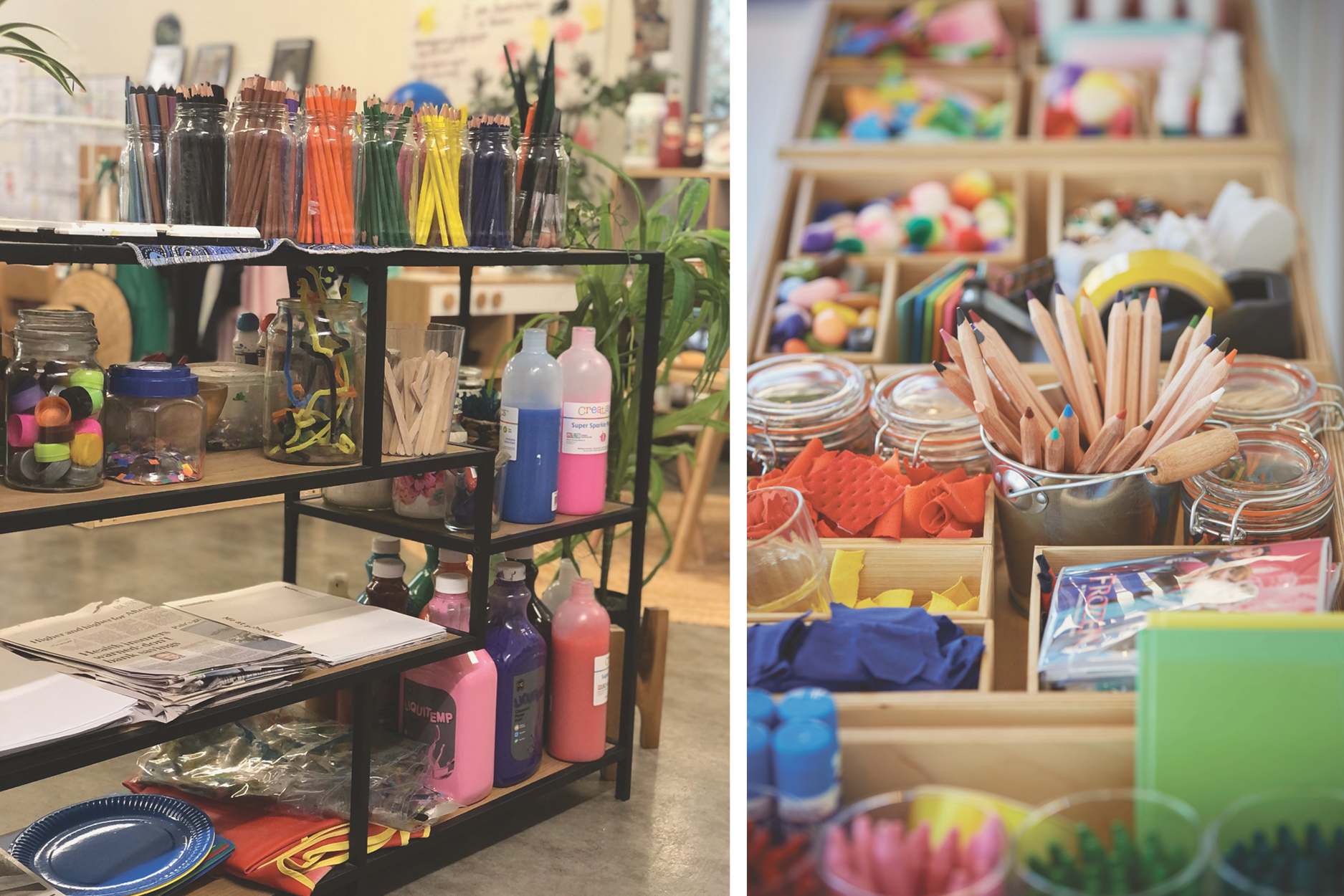
Thoughtful Expressive Arts areas that offer a variety of materials. Image #1 Petit Early Learning Journey Burdell via Kelly Goodsir Learning. Image #2 via New Shoots Children’s Centre, Bayfair.
Respecting the process
There is no right or wrong way, which is what makes expressive arts so much fun. It is far more exciting to explore open-ended activities than activities with a set and defined purpose. It should never be a step-by-step process to create the perfect product in our eyes.
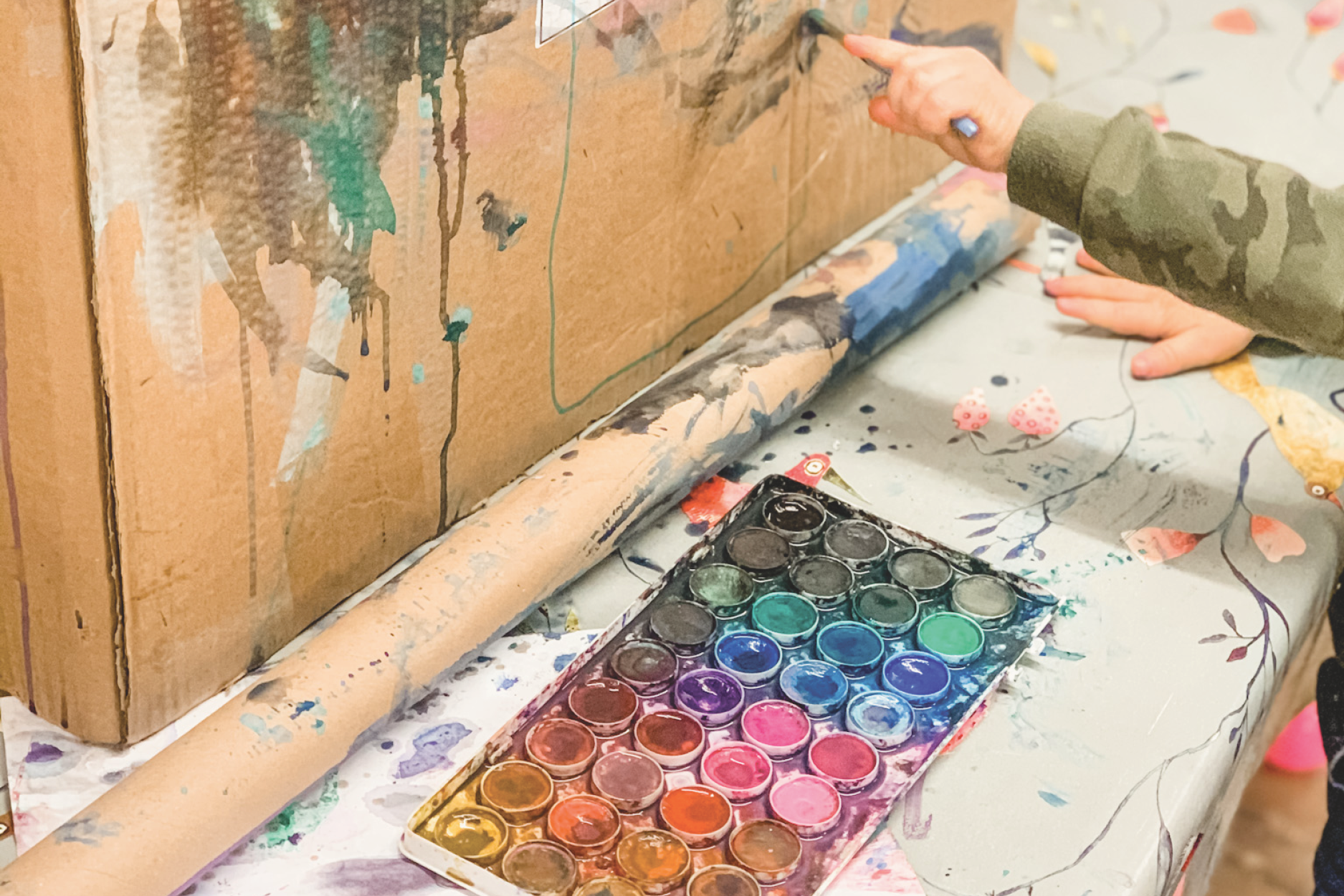
Allowing the full creative process to take place - no matter the scale. Image via Roseville Childcare, United Kingdom. Photograph by Emma Smith.
Respecting the product
Valuing a child's artistic expression is essential. How we store, display and react to a child's creation is crucial; whether it is a physical object or a performance, encouraging them to explore their creativity and expression will go a long way. By displaying or caring for their work with intention and meaning, we tell a child their work is special, they are special, and that we respect their process.
See our blog Lessons from the Bowerbird for more examples of how to curate and display creations.
Talking about art and artists
How we talk about our children's art is vital. Ask children interesting questions that promote new thinking and give them time to identify their feelings and respond.
We can learn from so many incredible artists in history. Exploring an artist's work can help build critical thinkers that analyse even the smallest of details.
Children don't need our direction. We're here to encourage them by offering ideas that support their thinking. Problem-solving is to be valued and enjoyed.
The power of our presence
As educators, it is how you respond to a child's work that is important. Being present is crucial. It is the best and most honest encouragement we can provide. Children want to be seen and heard, so the gift of time is fundamental in their ongoing development. Your time and attention in answering and responding to questions show you care and are interested in their work.
"Intrinsic motivation and reward comes from the inside; it is an indispensable quality in creative people, in every creative field, no exceptions." Pennie Brownlee, 2016
We know there are significant long-term benefits for developing creativity, but here are ten immediate benefits of engaging in creative opportunities from The Creative Station (UK)
- Hand and eye coordination - learning to develop fine motor skills takes practice. Whether it's learning to hold a pencil, mark-making, or scissor skills, creative activities help build our bodies' ability to sense its location, movements, and actions, and compare different materials.
- Inspire imagination - "Imagination is more important than knowledge" - Albert Einstein. A child's wellbeing and self-development will thrive when you nurture their imagination.
- Fine motor development - creativity helps children develop their hand and finger strength. Creating models, manipulating clay, or using their fingers to make marks all help develop hand and finger strength while supporting movement, balance, and spatial awareness.
- Sensory development - children make sense of their world by taking in information from their many senses. Being involved in creative activities helps to develop their observation skills, ability to listen to instructions, explore different textures, recognise different smells, and understand their world.
- Logic - overcoming challenges is part of life's journey. Creative activities help children to think, make connections and work things out for themselves. Failure is the 'First Attempt in Learning' and creative activities provide a wonderful way to think and try out different solutions to achieve the desired result. These activities can help children sort, organise and analyse information, problem-solve, and make connections.
- Communication skills - creative activities help develop children's listening skills, express their feelings, describe their activities and actions, and develop their language and attention to detail.
- Concentration - being creative builds a child's confidence to try new experiences and activities, persistence and patience, and helps them develop their ideas. A child's artwork may look like random scribbles or paint strokes, but they will see something entirely different.
- Confidence - developing a child's ideas and turning them into something they can hold in their hand promotes great pride, satisfaction and self-worth. Confidence enables children to develop their creativity as they know their ideas are recognised and valued. This increased confidence can also help with separation and decision-making.
- Social skills - sharing or bonding with others and making friends.
- Understanding the world - creative activities help understand concepts such as large and small, above and below, hard and soft, wet and dry, etc.
Ideas for your Expressive Arts area could include
Collage: cardboard, wool, natural resources, recycled materials, lids, tubes, cords, fabric, ribbon, trims, packaging and wrappings, pipe cleaners, along with all types of glues, including PVA, glue guns, cellulose paste.
Paint: standard paint, watercolours, paint pellets, liquid watercolours, gesso, gouache, fabric paint, dyes, ink, chalk paint, etc. used with paintbrushes, sticks and natural brushes, rollers, pipettes and syringes, sponges, palette knives, palettes, jars and containers, easels.
Sculpture and modelling: clay, plaster of Paris, three-dimensional recycled objects like paper towel rolls, etc., string, glues, clay and wood carving tools, carpentry equipment.
Drawing: pencils, felt pens, pens, soft pastels, brush pens, stamps, crayons, pastels, charcoal, watercolour pencils.
Modelling: clay, soft modelling clay, recycled materials, plaster.
Card and paper: various sized cards, plain and coloured paper, shiny and textured paper.
Dance and movement: ribbons, fabrics, musical instruments, space, good quality speakers to play music.
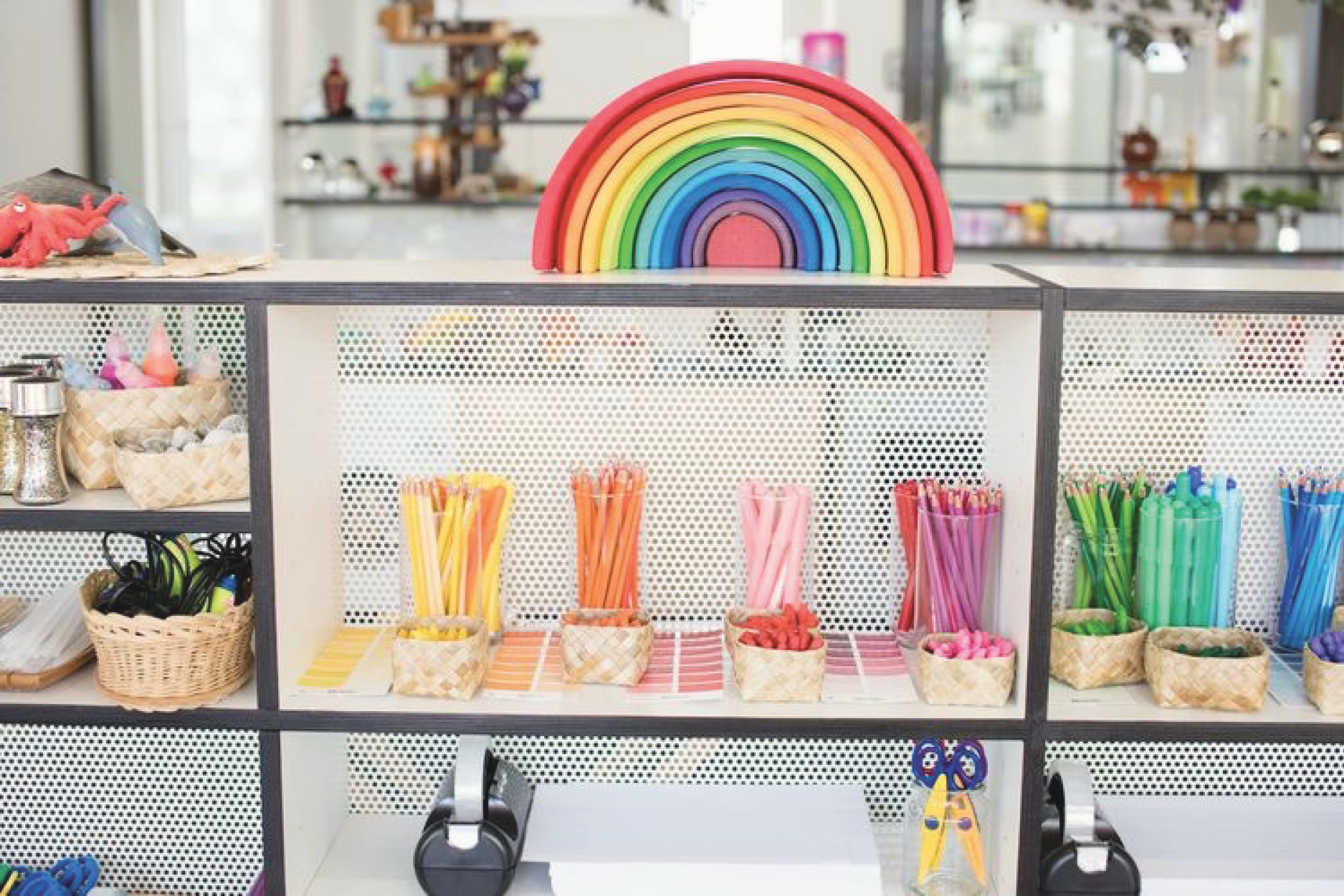
Image of a beautifully equipped and displayed Expressive Arts shelf at New Shoots Children’s Centre, Hobsonville.
Curated selections of open-ended, well-ordered materials displayed thoughtfully will go a long way in supporting creativity to thrive. Exploring and adding different mediums and materials is a sense of wonder and joy.
Here at Enspirement, we're passionate about creating environments where a creative genius can thrive. Delve into our Expressive Arts Enspire's or read our articles and blogs.
An artist needs their tools, and we can supply creative resources to help inspire your next Picasso! Visit Source, our online store, to inspire your children on the road to artistic enlightenment.
![]()
References
Magic Places - The adults’ guide to young children's creative artwork, Pennie Brownlee, 2015.
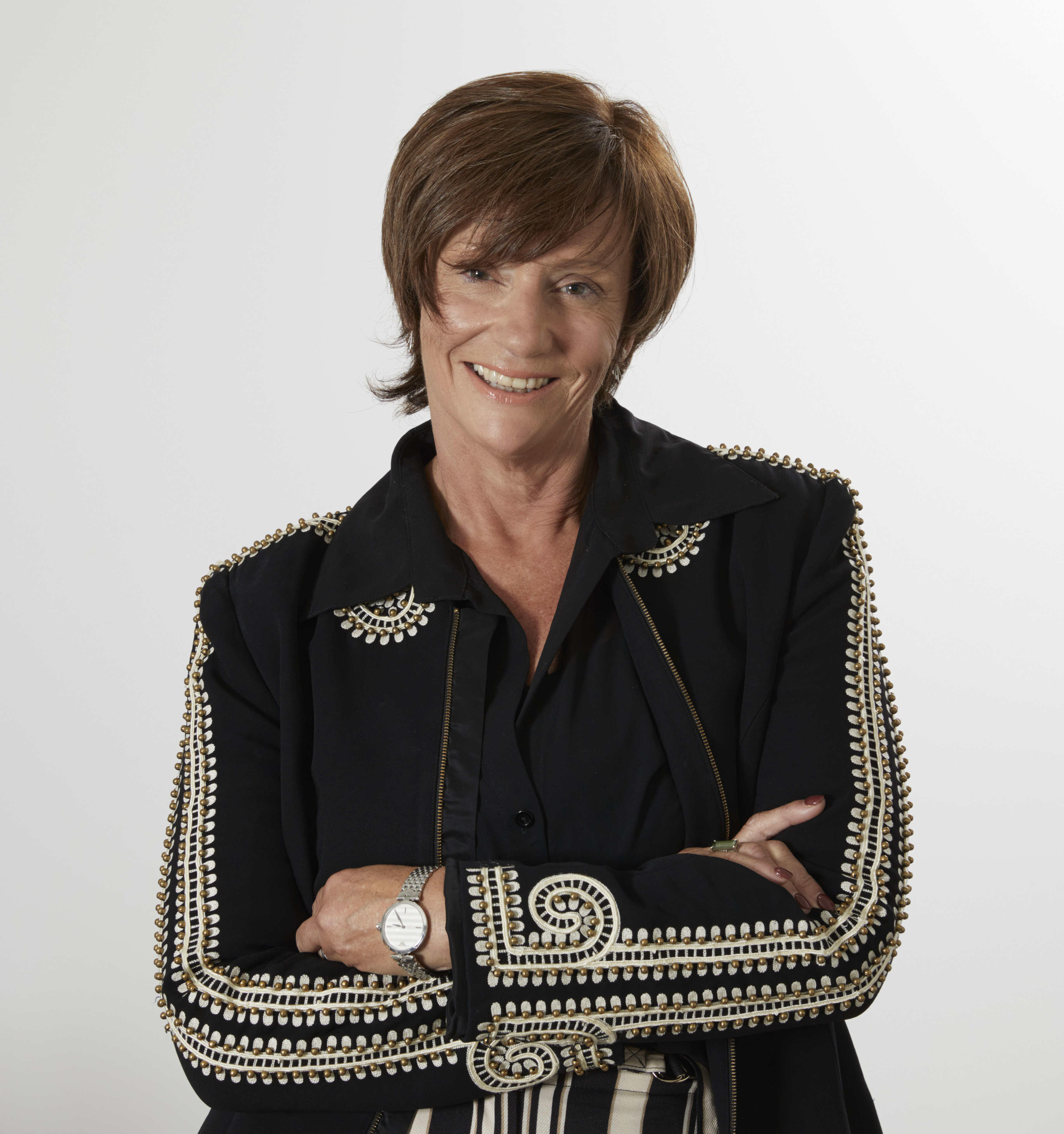 Michelle Pratt
Michelle Pratt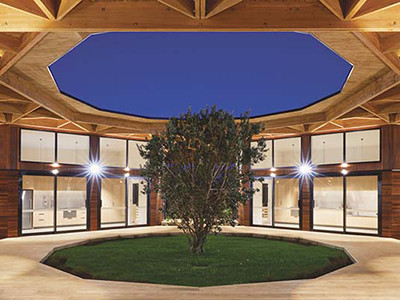
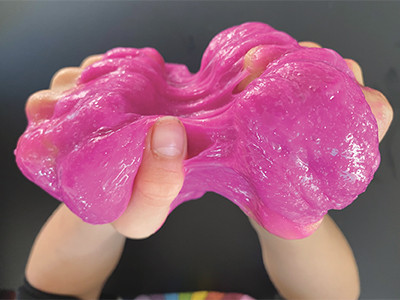
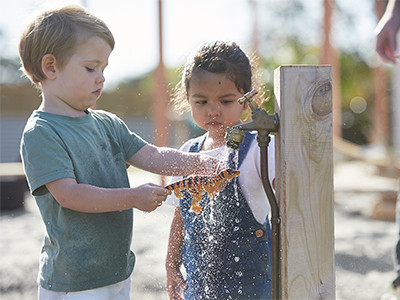
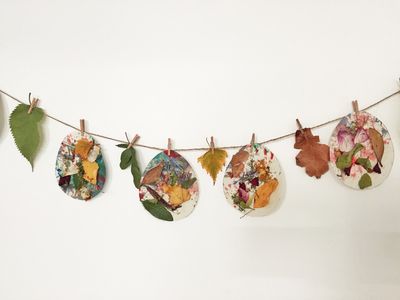
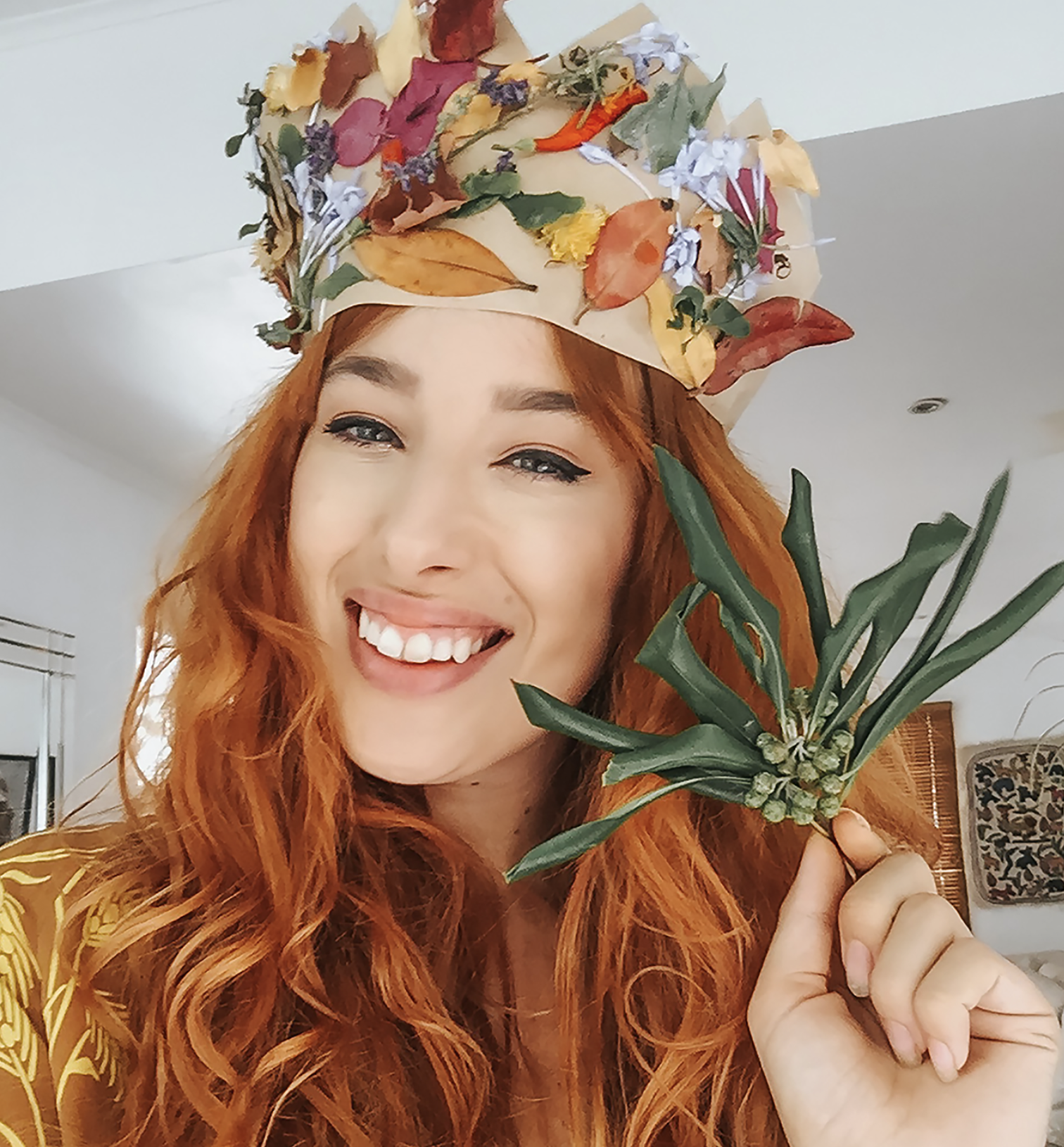 Jade Leigh Kelly
Jade Leigh Kelly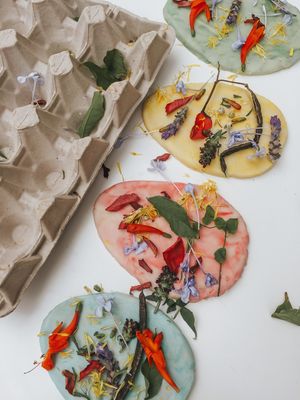
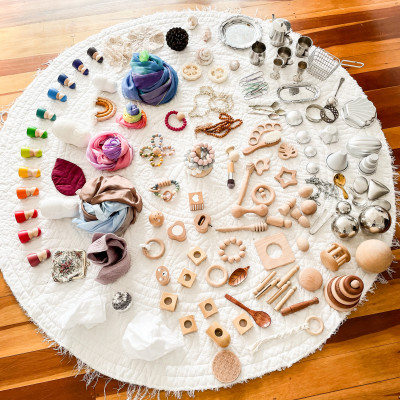
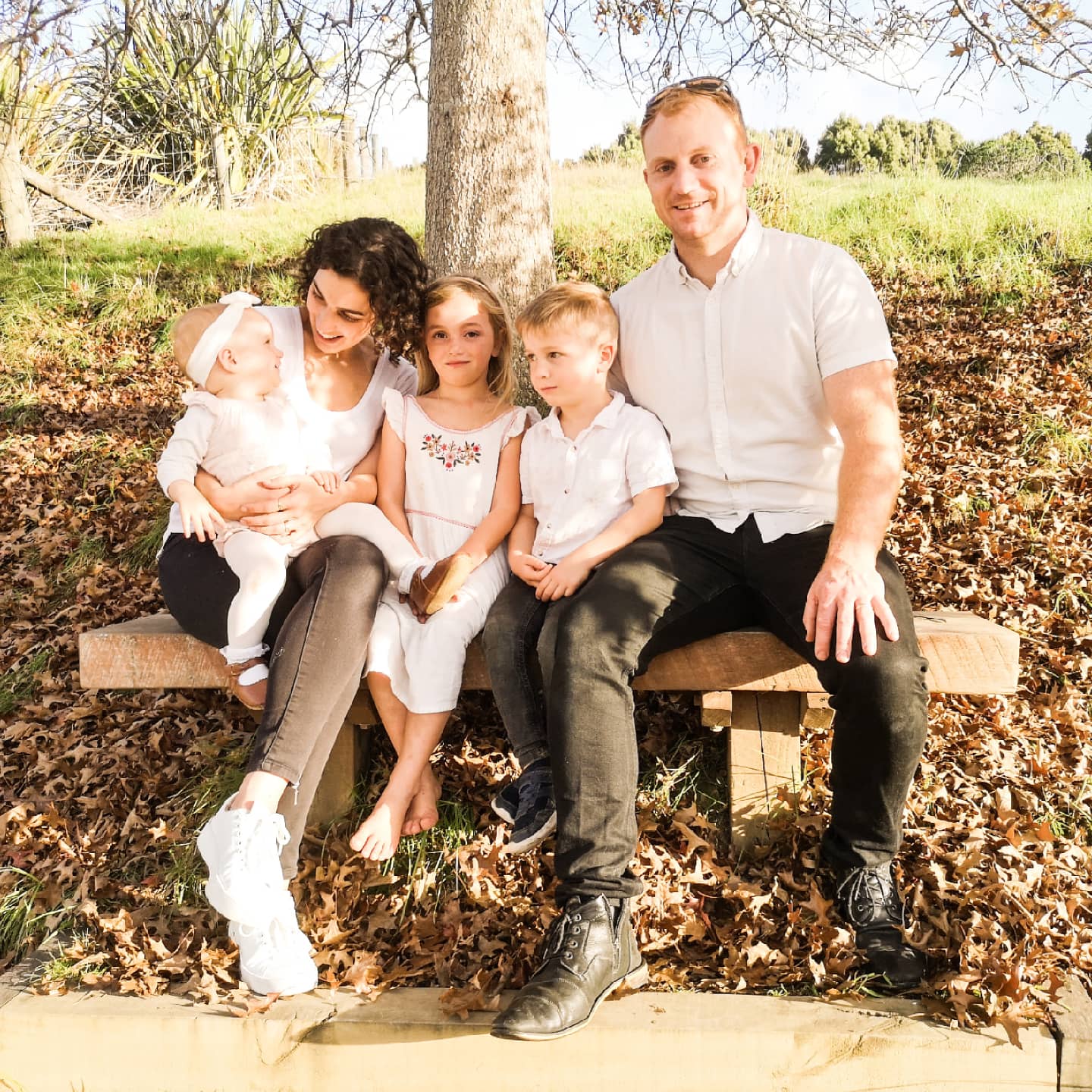 Lucie Kinzett
Lucie Kinzett